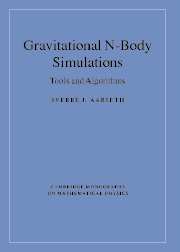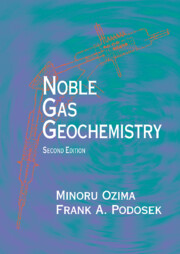Refine listing
Actions for selected content:
17000 results
Appendix N - Simple derivation of continuity equation
-
- Book:
- Ionospheres
- Published online:
- 22 January 2010
- Print publication:
- 20 August 2009, pp 606-607
-
- Chapter
- Export citation
Appendix J - Solar fluxes and relevant cross sections
-
- Book:
- Ionospheres
- Published online:
- 22 January 2010
- Print publication:
- 20 August 2009, pp 584-593
-
- Chapter
- Export citation
Chapter 7 - Magnetohydrodynamic formulation
-
- Book:
- Ionospheres
- Published online:
- 22 January 2010
- Print publication:
- 20 August 2009, pp 206-230
-
- Chapter
- Export citation
Chapter 3 - Transport equations
-
- Book:
- Ionospheres
- Published online:
- 22 January 2010
- Print publication:
- 20 August 2009, pp 50-71
-
- Chapter
- Export citation
Chapter 6 - Wave phenomena
-
- Book:
- Ionospheres
- Published online:
- 22 January 2010
- Print publication:
- 20 August 2009, pp 159-205
-
- Chapter
- Export citation
Chapter 10 - Neutral atmospheres
-
- Book:
- Ionospheres
- Published online:
- 22 January 2010
- Print publication:
- 20 August 2009, pp 289-334
-
- Chapter
- Export citation
Contents
-
- Book:
- Ionospheres
- Published online:
- 22 January 2010
- Print publication:
- 20 August 2009, pp vii-xii
-
- Chapter
- Export citation
Appendix P - Monte Carlo methods
-
- Book:
- Ionospheres
- Published online:
- 22 January 2010
- Print publication:
- 20 August 2009, pp 614-617
-
- Chapter
- Export citation
Chapter 14 - Ionospheric measurement techniques
-
- Book:
- Ionospheres
- Published online:
- 22 January 2010
- Print publication:
- 20 August 2009, pp 517-547
-
- Chapter
- Export citation
Chapter 12 - The terrestrial ionosphere at high latitudes
-
- Book:
- Ionospheres
- Published online:
- 22 January 2010
- Print publication:
- 20 August 2009, pp 398-481
-
- Chapter
- Export citation
Index
-
- Book:
- Ionospheres
- Published online:
- 22 January 2010
- Print publication:
- 20 August 2009, pp 618-628
-
- Chapter
- Export citation
Chapter 5 - Simplified transport equations
-
- Book:
- Ionospheres
- Published online:
- 22 January 2010
- Print publication:
- 20 August 2009, pp 113-158
-
- Chapter
- Export citation
Appendix C - Integrals and transformations
-
- Book:
- Ionospheres
- Published online:
- 22 January 2010
- Print publication:
- 20 August 2009, pp 554-557
-
- Chapter
- Export citation
Chapter 8 - Chemical processes
-
- Book:
- Ionospheres
- Published online:
- 22 January 2010
- Print publication:
- 20 August 2009, pp 231-253
-
- Chapter
- Export citation
Appendix K - Atmospheric models
-
- Book:
- Ionospheres
- Published online:
- 22 January 2010
- Print publication:
- 20 August 2009, pp 594-599
-
- Chapter
- Export citation
Chapter 13 - Planetary ionospheres
-
- Book:
- Ionospheres
- Published online:
- 22 January 2010
- Print publication:
- 20 August 2009, pp 482-516
-
- Chapter
- Export citation
Appendix D - Functions and series expansions
-
- Book:
- Ionospheres
- Published online:
- 22 January 2010
- Print publication:
- 20 August 2009, pp 558-559
-
- Chapter
- Export citation
Appendix H - Maxwell velocity distribution
-
- Book:
- Ionospheres
- Published online:
- 22 January 2010
- Print publication:
- 20 August 2009, pp 575-580
-
- Chapter
- Export citation

Gravitational N-Body Simulations
- Tools and Algorithms
-
- Published online:
- 18 August 2009
- Print publication:
- 23 October 2003

Noble Gas Geochemistry
-
- Published online:
- 18 August 2009
- Print publication:
- 24 December 2001
